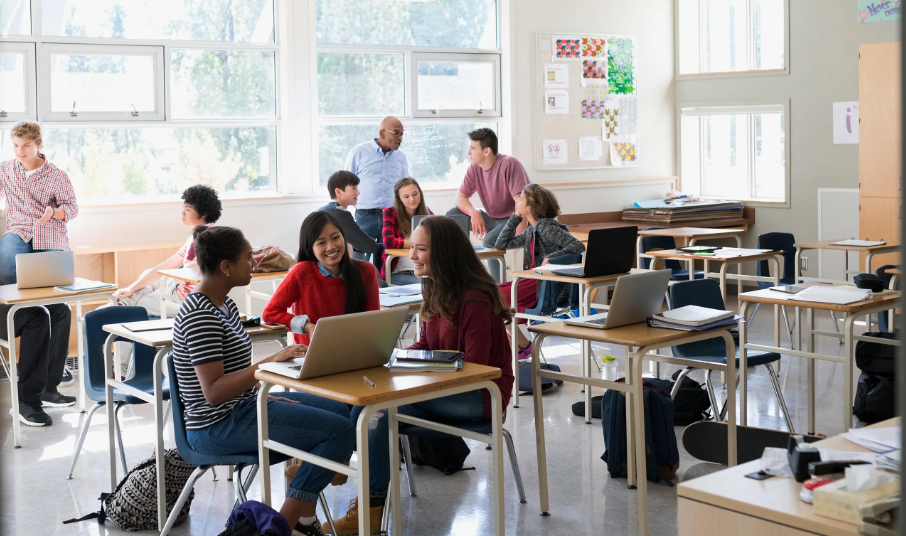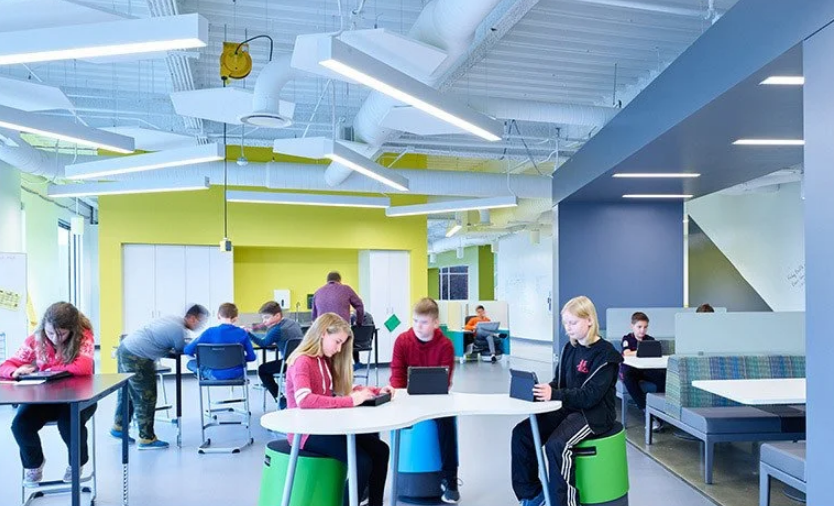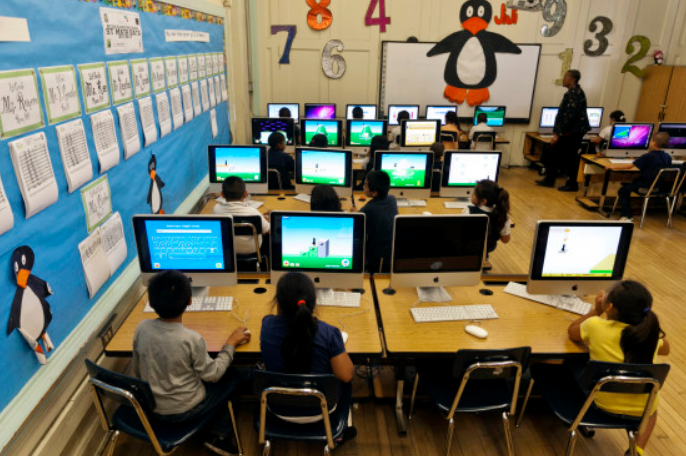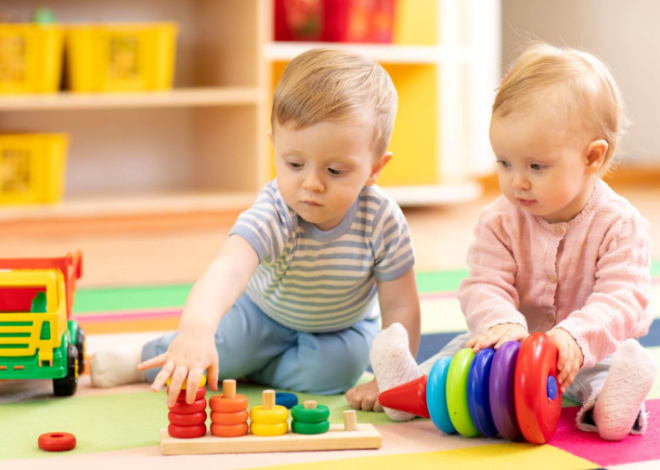
Unveiling the Coolest Classroom Innovations of the Decade!
In the fascinating world of elementary school, innovation is more than just a buzzword; it is a revolutionary force that is transforming the face of education. In the last decade, we've seen a proliferation of classroom innovations that have challenged traditional educational ideals. Join us as we explore the most exciting classroom innovations of the last decade, divided into three captivating sections: “Tech Marvels Transforming Learning Spaces,” “Beyond Textbooks: Innovations in Curriculum Design,” and “Empowering Educators with Cutting-Edge Tools.” Prepare to be surprised as you explore the future of elementary school!
Tech Marvels Transforming Learning Spaces:
Interactive Whiteboards Revolutionize Teaching Methods:
Consider a classroom without the traditional chalkboard and all the benefits of the modern interactive whiteboard. These remarkable touchscreen devices have radically changed how information is taught in today's classrooms. Interactive whiteboards are the pinnacle of instructional technology because they can display multimedia content, encourage student interaction, and facilitate spirited debates. These interactive whiteboards have turned the classroom into a completely immersive learning experience.
Virtual Reality in Education: A Classroom Journey Beyond Boundaries:
Consider elementary school students learning about the solar system or ancient civilizations via a virtual field trip. This is no longer a pipe dream thanks to the integration of virtual reality (VR) into the classroom. Virtual reality (VR) has transformed education by enabling students to engage in interactive, immersive activities outside of the classroom. Virtual reality (VR) is breaking down traditional educational barriers and transforming learning into an immersive experience, with applications ranging from interactive historical lessons to virtual laboratory experiments.
Gamification: Making Learning Fun and Engaging:
Gamification is about incorporating fun into classroom changes. The term “gamification” refers to the use of game mechanics in the classroom to promote student engagement and retention. Gamification adds fun and excitement to the curriculum by transforming arithmetic problems into interactive challenges and rewarding pupils for completing tasks. When students regard learning as a thrilling journey, they embrace challenges and avidly seek new knowledge.
AI-Powered Personalized Learning for Every Student:
The age of AI has resulted in unparalleled levels of individualization in the classroom. AI-powered systems that analyze each student's performance and learning style have the potential to generate individualized educational experiences. To ensure that each student learns independently, personalized learning systems feature individualized courses, timely feedback, and adaptive examinations. The result is a more tailored and productive educational experience for each learner.
Smart Classroom Management Systems: Navigating the Future of Education:
Implementing intelligent classroom management technologies has resulted in increased administrative efficiency, communication, and learning environment quality. These sophisticated technologies allow teachers to dedicate more time to education and less to administrative responsibilities like attendance tracking and parent communication. Automation of grading and real-time collaboration tools are just two examples of how smart classroom management systems are paving the way for a future in which technology is integrated into the educational process.
Innovations in Curriculum Design:
Project-Based Learning: Fostering Practical Knowledge:
Project-based learning helps students prepare for the difficulties they will confront in the real world. Thanks to this new method, students can participate in hands-on projects that reflect real-world circumstances, shifting the emphasis from rote memorization to practical application. Project-based learning helps students develop their analytical, problem-solving, and subject-matter knowledge. It can take many forms, from developing a model ecosystem to planning a sustainable metropolis.
Digital Textbooks and E-Libraries: A Paperless Educational Frontier:
Digital textbooks and e-libraries have come, eliminating the need for students to carry heavy volumes. Digital textbooks include a wealth of interactive content, multimedia technologies, and frequent updates. They are available on tablets and laptops. In addition to traditional textbooks, electronic libraries offer a variety of other digital resources, including e-books and instructional DVDs. Not only does the move toward paperless education make life easier for students, but it also opens up a wealth of interactive materials that are constantly increasing student learning.
Coding and STEM Integration: Nurturing Future Innovators:
Combining STEM (science, technology, engineering, and mathematics) curricula with coding education is essential in today's technologically evolved culture. Coding is being integrated into new curricula from an early age, helping children to develop computational thinking, problem-solving skills, and creative thinking. STEM (science, technology, engineering, and mathematics) courses teach students to think critically about their surroundings and draw connections across seemingly unrelated subjects. A new generation of young people is ready to face the challenges of a rapidly changing technological environment.
Flipped Classroom Models: Turning Education Upside Down:
A novel paradigm known as “flipped classrooms” is challenging the conventional understanding of student-teacher interactions. Students watch videos or use other online resources to study, then collaborate in class on projects and activities that apply what they've learned. Students have a better understanding of subjects through active participation as a result of these one-on-one contacts between instructors and students enabled by this reversal of the traditional teaching style.
Global Learning Platforms: Broadening Horizons in Primary Education:
Classroom innovations that cross geographic borders enable students to connect with a global community of learners. Students worldwide can collaborate on global learning platforms, promoting cross-cultural understanding, improved global awareness, and the development of critical skills for the modern world. Online forums, collaborative projects, and virtual exchanges allow elementary school students to learn more about themselves and their surroundings.
Empowering Educators with Cutting-Edge Tools:
Professional Development through Online Teacher Communities:
Teachers, like students, are embracing classroom innovations as a way to advance their professional development. Online teacher communities facilitate collaboration, resource sharing, and continual learning. In an ever-changing educational scene, these networks offer teachers tools such as virtual workshops and discussion forums to help them stay current with the latest trends, exchange what works, and enhance their teaching approaches.
Data-Driven Decision Making: Enhancing Instructional Strategies:
Educators are employing analytics to assist decision-making in the age of big data. New approaches to data-driven classroom decision-making include recording and assessing student involvement, attendance, and grades. Educators can utilize this information to make better decisions about lesson plans, identify problem areas, and intervene to ensure that all students achieve. As a result, education becomes more proactive and responsive, allowing teachers to exercise greater influence.
Inclusive Technologies: Bridging Gaps for Diverse Learners:
Classroom innovations are breaking down barriers to education by bringing inclusive technology that bridges gaps for various learners. These tools contribute to the development of an inclusive classroom by fulfilling the needs of a diverse group of students, including those with disabilities. All students, regardless of ability, have equal access to instructional resources thanks to inclusive technologies like text-to-speech software and adaptive devices. Schools are becoming more inclusive as a result of this transformation.




